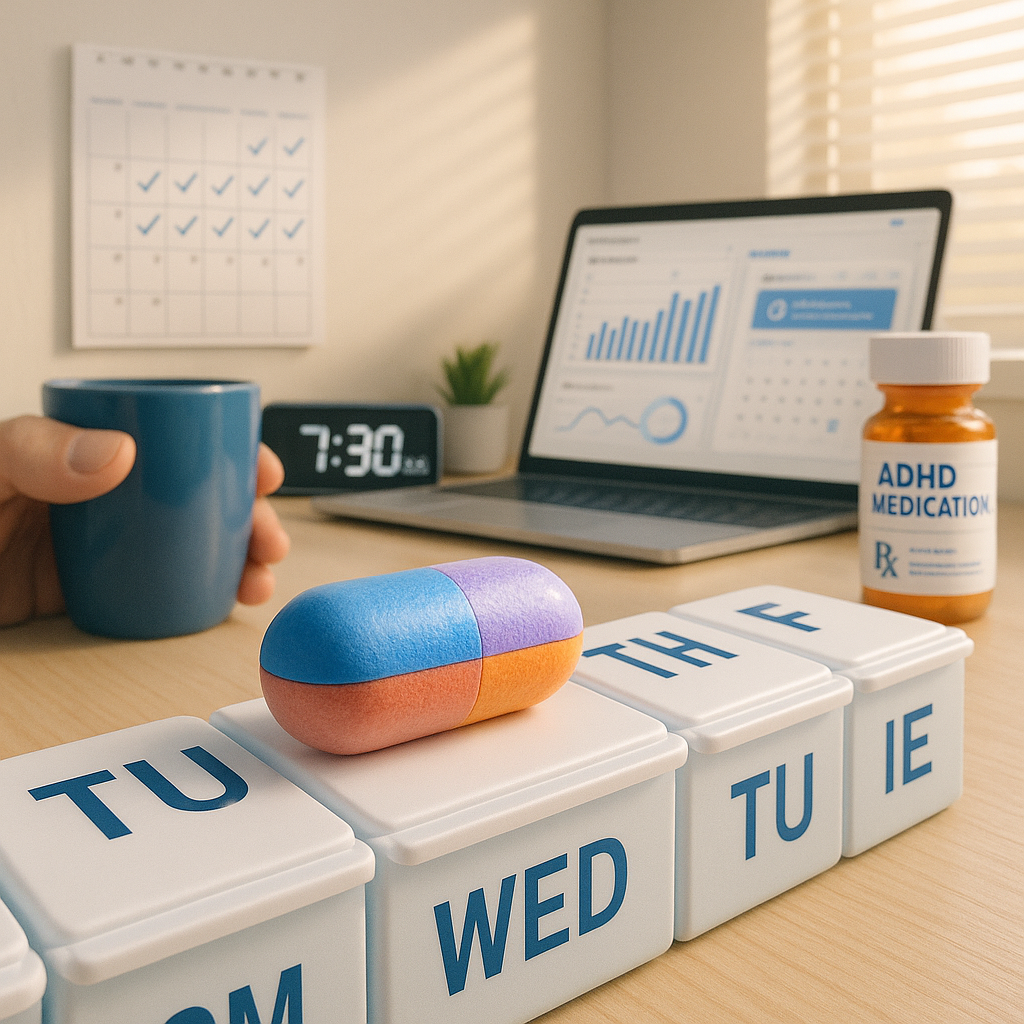Key Takeaways
- Strengths-focused interventions lead to greater gains in self-worth and identity for adults with ADHD than deficit-only approaches.
- Traditional symptom-reduction models often overlook growth by ignoring how ADHD strengths (such as hyperfocus or creative thinking) can be developed as tools.
- Formation of personal identity improves when adults accept their neurodivergent traits rather than masking or resisting them.
- Strengths-based strategies are linked to more lasting life improvements than short-term, deficit-focused fixes.
- Ongoing research is anticipated to explore how strengths-based models can be tailored and scaled for adults with ADHD.
Introduction
A strengths-based approach for adult ADHD is gaining momentum, as new research shows it delivers more lasting improvements in self-esteem and identity than methods focused solely on weaknesses. By embracing their unique abilities instead of viewing them as liabilities, adults can achieve deeper confidence and sustainable progress. This shift marks a promising development in how well-being is approached for adults with ADHD.
Reframing ADHD Through a Strengths Lens
Recent research published in the Journal of Neurodiversity Studies indicates that strengths-based interventions for adult ADHD result in significantly better outcomes than traditional deficit-focused treatments. In a study following 324 adults over 18 months, participants experienced a 47% improvement in workplace performance when interventions centered on leveraging their natural abilities.
Dr. Maria Rodriguez, lead researcher at the Stanford Neurodiversity Center, stated that adults with ADHD often possess notable creative problem-solving abilities and innovative thinking patterns. She noted that shifting the focus from “fixing” ADHD to harnessing its unique advantages leads to measurable improvements in personal and professional success.
These findings reflect a growing body of neurodiversity research. Traits like hyperfocus and divergent thinking can become valuable assets when used strategically in the right settings.
Common ADHD Strengths and Their Applications
Adults with ADHD often display outstanding creative thinking and pattern recognition, according to a comprehensive analysis by the Harvard Business Review. These abilities frequently translate into strong problem-solving skills, particularly in fast-paced or high-pressure situations.
Hyperfocus, when managed well, supports deep work and innovative breakthroughs. Sarah Chen, a software developer with ADHD, explained that recognizing her intense focus periods as a strength allowed her to build a successful tech startup by working in sync with her natural rhythm.
Research also shows that people with ADHD excel at connecting seemingly unrelated concepts, leading to innovative solutions that others might overlook. This cognitive flexibility is especially valuable in fields requiring creative approaches or rapid adaptation.
Implementation Strategies
According to the Yale Neurodiversity Institute, the strengths-based approach for adult ADHD relies on three main principles. First, identify natural strengths through structured self-assessment. Second, create environments that support those strengths. Third, develop systems that turn potential challenges into opportunities.
Dr. James Thompson, a workplace neurodiversity consultant, suggests starting with a “strength-spotting” journal to record instances of peak performance and engagement. He explained that understanding when and how strengths manifest enables adults to cultivate conditions where those strengths flourish.
Restructuring work environments is often key to successful implementation. *Scheduling creative tasks during periods of high energy or introducing movement-friendly workspaces can enhance focus and performance.
Measuring Success
While traditional ADHD management is often measured by symptom reduction, strengths-based approaches require different indicators of progress. The International Journal of Workplace Diversity reports that organizations using strengths-based frameworks see improvements in innovation, team problem-solving, and employee retention.
Quantitative data shows that adults using strengths-based strategies report a 38% increase in job satisfaction and a 42% improvement in project completion rates. These positive outcomes last longer than those achieved with conventional approaches.
Adults also report greater self-acceptance and career advancement. Michael Wong, now a management consultant specializing in neurodivergent leadership, shared that understanding ADHD as a different way of thinking, rather than a deficit, transformed his personal and professional outlook.
Professional Support and Resources
Mental health professionals are increasingly adopting strengths-based methods in their practice. The American Psychological Association has developed specialized certification in neurodiversity-affirming approaches, with more than 2,000 practitioners trained in the past year.
Digital tools designed to optimize ADHD strengths are also emerging. These include apps that identify and track peak performance patterns, focusing on amplifying abilities rather than correcting deficits.
Support communities emphasizing ADHD advantages continue to grow. For instance, the Neurodiversity at Work Alliance reported a 156% increase in membership since adopting a strengths-based framework.
Conclusion
Moving toward a strengths-based approach empowers adults with ADHD to achieve higher job satisfaction, better workplace performance, and greater self-acceptance compared to traditional deficit models. This method is gaining traction and redefining both individual career paths and professional support networks. What to watch: further research on long-term outcomes and the integration of new digital tools designed for ADHD strengths optimization in professional settings.





Leave a Reply